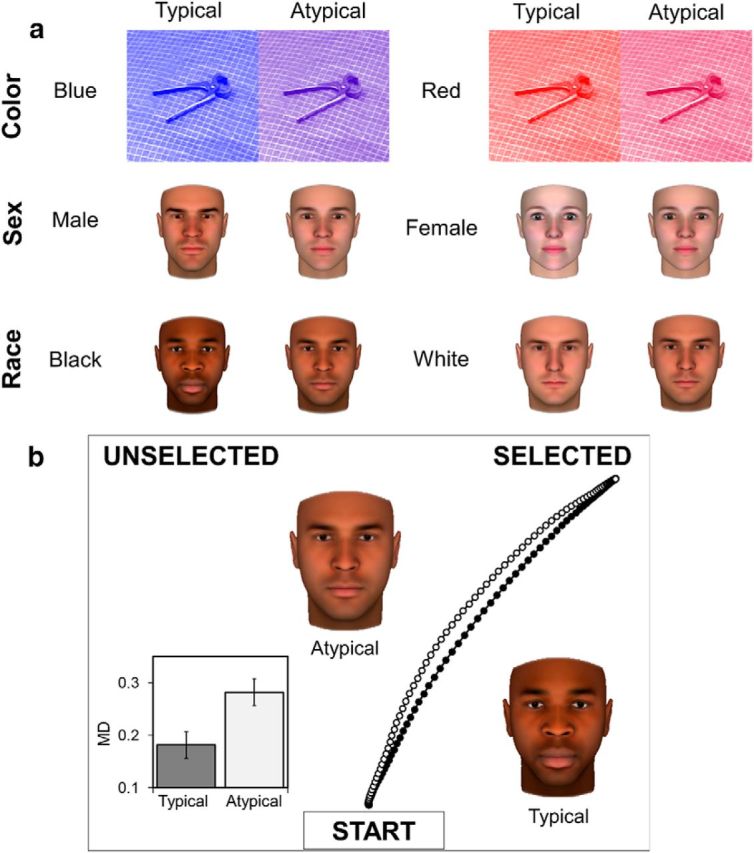Figure 1.

a, Stimuli across all three tasks. Per categorization task (top: color; middle: sex; bottom: race), faces varied from one category to another, being either typical or atypical exemplars of their respective categories. b, Behavioral results (n = 16) and example of mouse-tracking paradigm. Results showed significantly higher maximum perpendicular deviation (MD) toward atypical (white line) versus typical (black line) targets across tasks (b = 0.05, SE = 0.006, t(15.058) = 7.935, p < 0.0001), demonstrating increased deviation toward the nonchosen response options (i.e., coactivation). Results in the bar plot are depicted to plot condition differences intuitively using within-subject error bars (39); however, the analysis was completed in a multilevel mixed model. In this paradigm, participants clicked a start button, after which the stimulus appeared and they selected response options in either top corners of the screen (e.g., male vs female; white vs black; red vs blue). Mouse trajectories were recorded continuously to observe the amount of deviation toward nonchosen responses and index category coactivation. Typical and atypical black faces are included as examples of these conditions.
